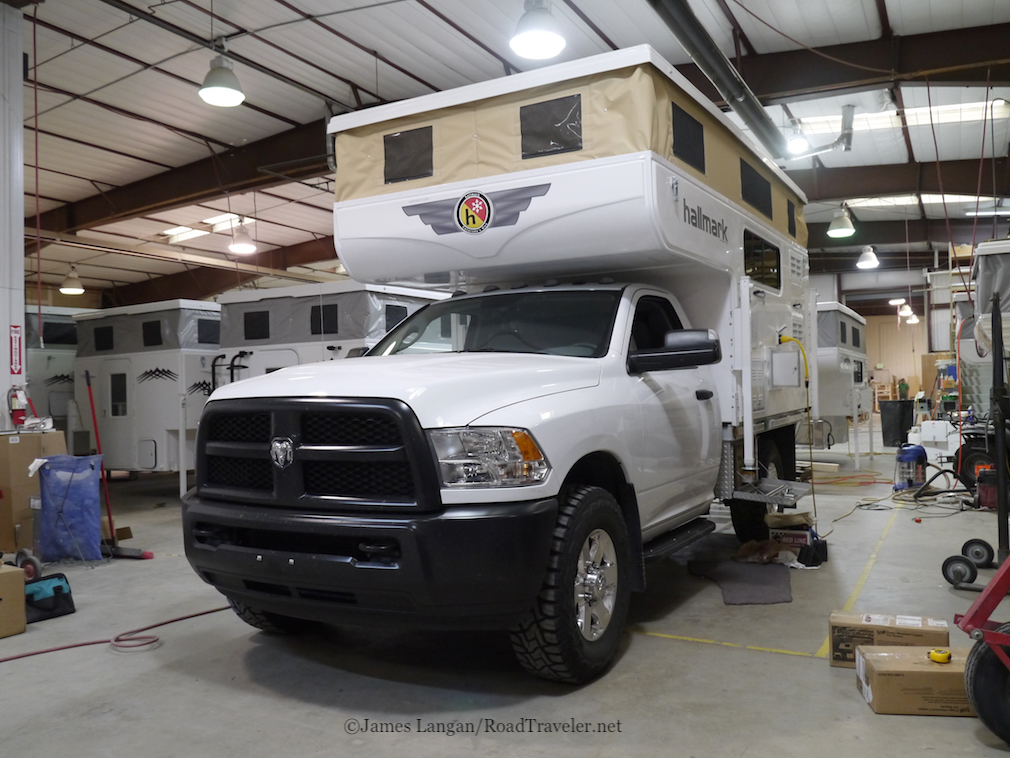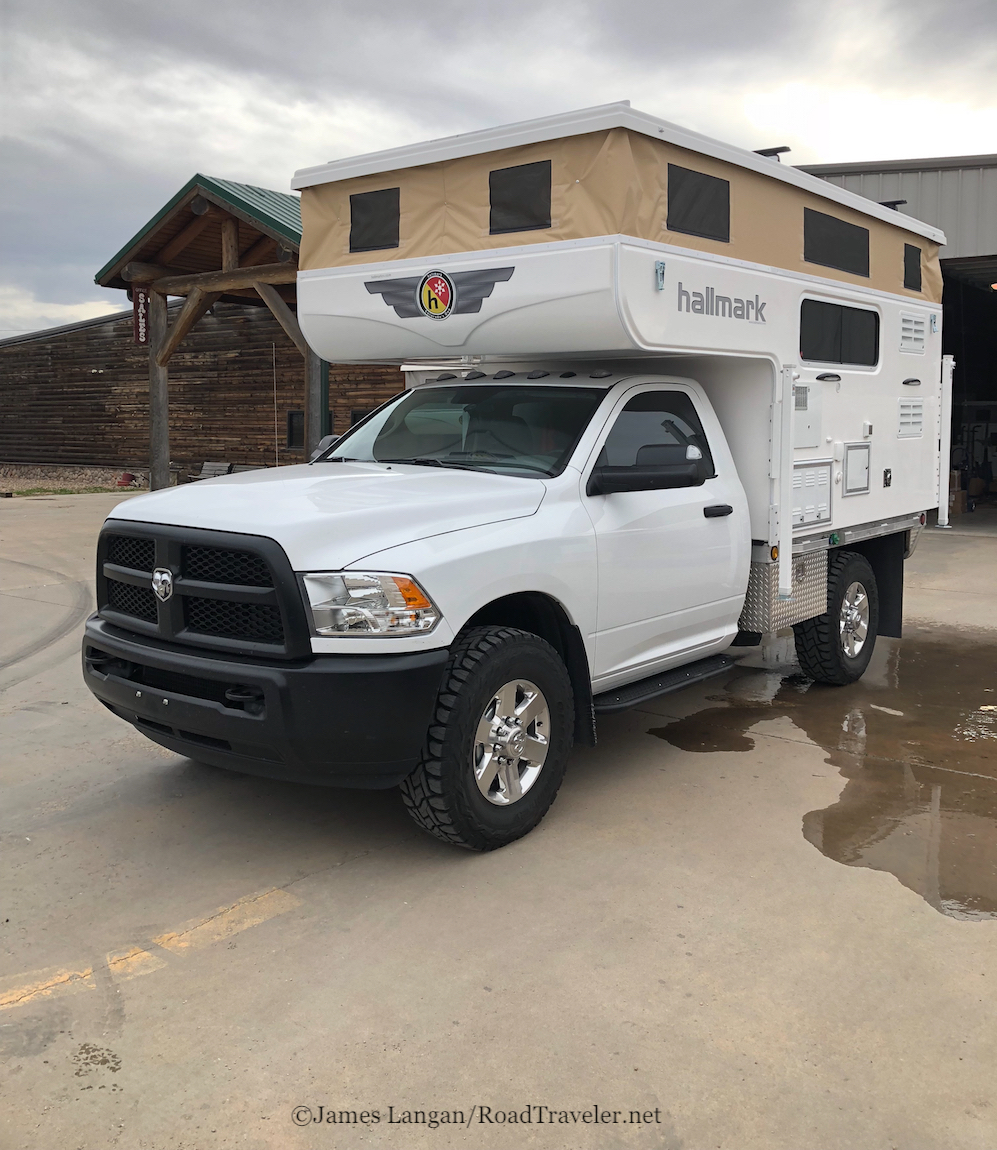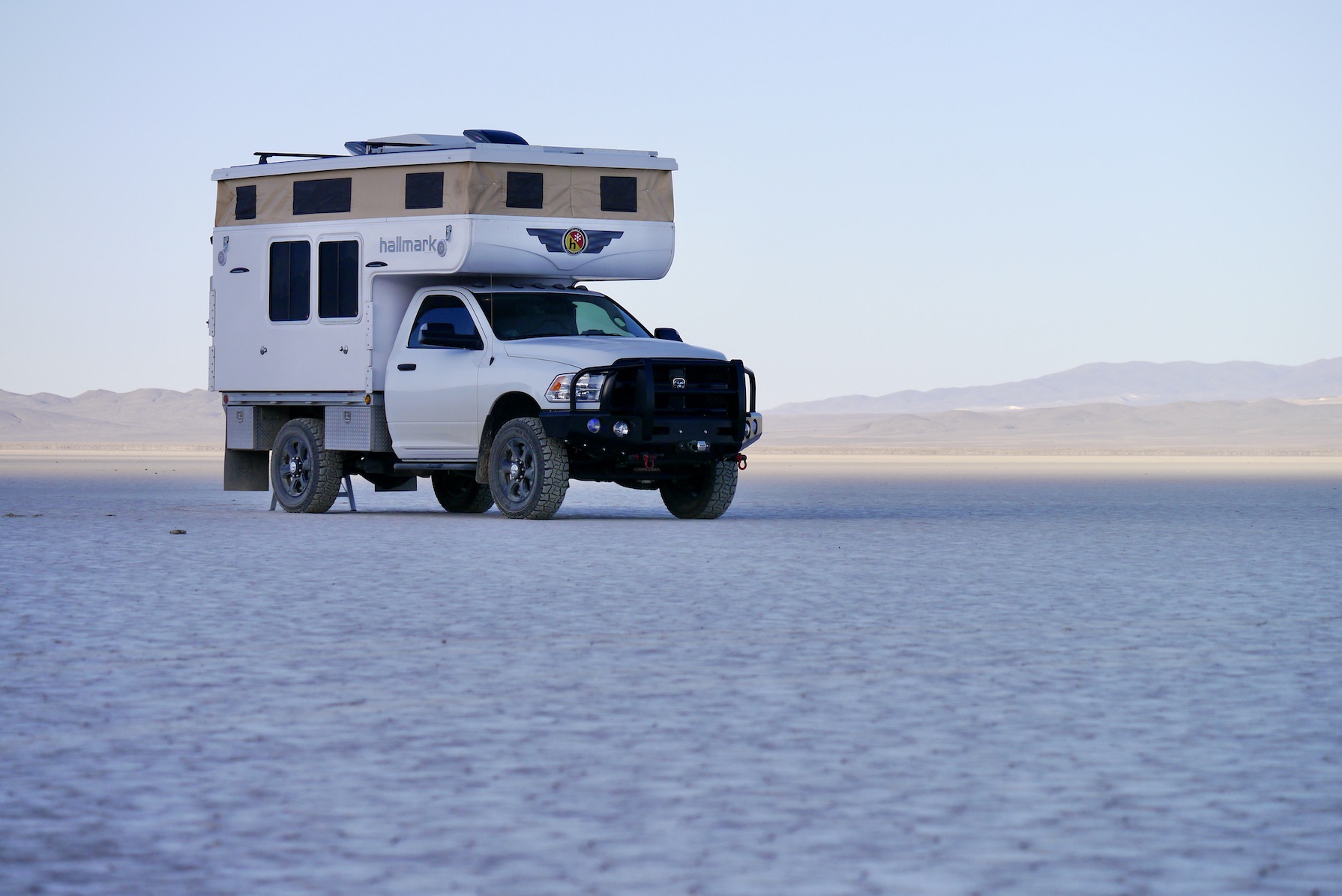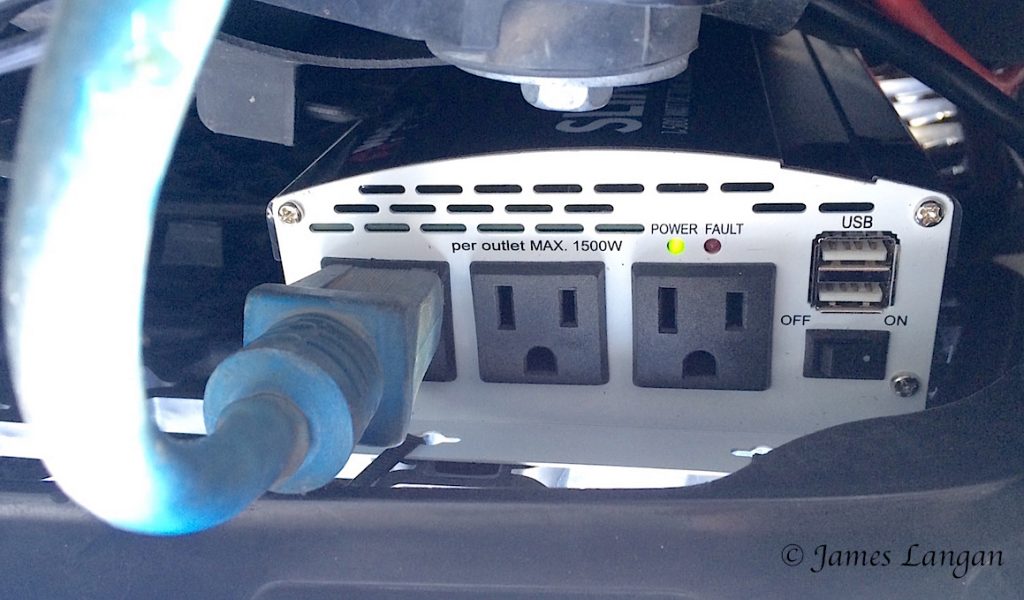The first one. April 4, 2018


Copyright James Langan/RoadTraveler.net
All Rights Reserved.
Source: Hallmark Truck Campers

Trucks, Tech, Reviews, ADV Travel
The first one. April 4, 2018


Copyright James Langan/RoadTraveler.net
All Rights Reserved.
Source: Hallmark Truck Campers
Minor modifications were made to the headache rack supports on the Hillsboro 2000 Series aluminum flatbed, before placing the Hallmark Nevada camper.
Copyright James Langan/RoadTraveler.net
All Rights Reserved.
Source: Hallmark Truck Campers

(For those not following my Instagram feed, plus a few more tidbits…)
A few weeks ago I test fit, then performed a quick and dirty installation of this WAGAN Tech 1500 SlimLine inverter on my 2014 Ram/Cummins 2500. The idea is to use the almost free power from the engine to run an electric heater inside my Hallmark Milner camper while driving to keep things thawed. Why? Because in about two months I’m heading to the Canadian Arctic Ocean. It is probably the last year to drive the ice road to Tuktoyaktuk, Northwest Territories, before the all-weather road is completed.
The inverter and heater worked, briefly, but the inverter kept faulting. Likely overheating because of the flush mounting (no air circulation) atop the fuse/relay box, combined with engine bay heat. After a -7 degree Fahrenheit overnight camp test running a Lasko Stanley electric heater through the night on a generator, I was ready to ditch the electric heater idea and rely completely on the propane furnace (still might), which works extremely well.

However, I found another unconventional, relatively easy spot to stuff the inverter, immediately behind the grill, and the appropriately short, provided cables are still long enough. The vertical, hanging installation is not ideal, though I’m willing to gamble and test it, and a chat with WAGAN was encouraging. While a flat, horizontal installation is recommended, the vertical orientation is not as big a negative as I’d feared. The more serious concerns remain debris, moisture, and vibration.
The cold front covering the grille should keep most debris away, the inverter’s outlets are more protected than shown in the photo, and hopefully there is enough airflow for cooling. Overheating should not be a big concern in the Arctic.
A high-idle driveway test produced no faults over 1.25 hours, and the inverter continuously ran the 1500 watt heater on low, presumably drawing about 750 watts. Most important, the temperature inside the cavity holding the water tank and main supply lines, measured with a remote sensor, continued to rise. This idea may still work for supplemental camper heat while underway. An upcoming long drive before another cold night camping systems test should be informative.
Sources:
WAGAN Corporation: WAGAN.com
Copyright James Langan/RoadTraveler. All Rights Reserved.